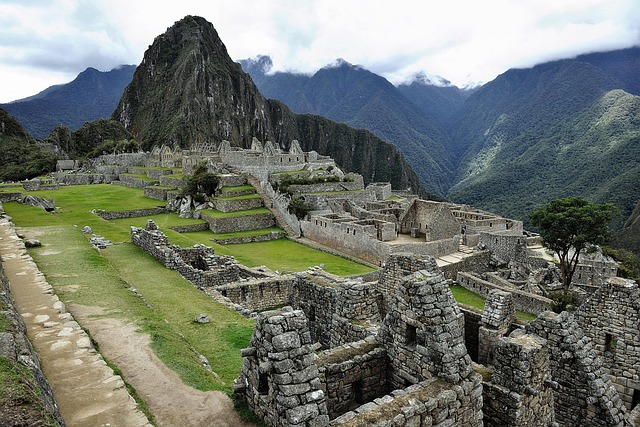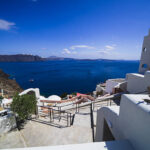Machu Picchu, often referred to as the “Lost City of the Incas,” is one of the most iconic and breathtaking archaeological sites in the world. Located high in the Andes Mountains of Peru, Machu Picchu has captivated the imaginations of millions of visitors worldwide, with its dramatic architecture, stunning natural surroundings, and rich history. This ancient Inca city is not only a UNESCO World Heritage Site but also a must-visit destination for travelers seeking a deep dive into Peru’s rich cultural heritage and natural beauty.
What is Machu Picchu?
Machu Picchu is a 15th-century Inca citadel built by the Inca Emperor Pachacuti. It is one of the most remarkable examples of Incan civilization, known for its advanced engineering, architecture, and stunning location atop a mountain ridge overlooking the Urubamba River. The site is famous for its breathtaking panoramic views, intricate stonework, and historical significance as a royal estate or ceremonial center.
Despite being abandoned in the 16th century during the Spanish conquest of the Inca Empire, Machu Picchu remained largely unknown to the outside world until its rediscovery by Hiram Bingham in 1911. Since then, it has become one of the most visited tourist attractions in the world.
History and Significance of Machu Picchu
Machu Picchu was constructed around 1450 AD during the peak of the Inca Empire. It was built using precisely cut stonework that required no mortar, a technique that continues to marvel engineers and archaeologists to this day. The Inca’s ability to move massive stones without the use of modern machinery is one of the many mysteries surrounding the site.
The exact purpose of Machu Picchu remains debated, but it is widely believed to have been a royal estate for the Incan emperor or possibly a spiritual center dedicated to Inca gods. Some believe that it was a religious sanctuary, while others argue it was used as a military stronghold due to its strategic location.
Key Features of Machu Picchu
Machu Picchu is not just a single building but a vast site with numerous architectural features. Here are some of its most important elements:
- The Intihuatana Stone: One of the most famous features of Machu Picchu is the Intihuatana Stone, also known as the “Hitching Post of the Sun.” This carved stone is believed to have been used by the Incas for astronomical and religious purposes, marking the spot where the sun’s rays align during the equinoxes.
- Temple of the Sun: This semicircular temple is dedicated to the sun god Inti, and it features windows that align perfectly with the sun during the summer solstice, allowing sunlight to shine directly through them.
- The Inca Trail: The Inca Trail is one of the most popular treks in the world. It leads travelers through stunning landscapes, cloud forests, and Incan ruins before culminating at Machu Picchu. The hike takes about 4 days and is a bucket-list adventure for many.
- The Plaza Principal: The main plaza of Machu Picchu is where the Incan nobles would gather. The site includes terraces, altars, and ceremonial structures, providing a glimpse into the social and spiritual life of the Inca Empire.
- The Agricultural Terraces: Machu Picchu has an advanced agricultural system with numerous terraces used for farming. These terraces allowed the Incas to cultivate crops such as maize, potatoes, and quinoa, despite the challenging mountainous terrain.
How to Visit Machu Picchu
Visiting Machu Picchu is an unforgettable experience, but planning a trip requires some preparation. Here’s a guide to help you get the most out of your visit:
- Best Time to Visit: The best time to visit Machu Picchu is during the dry season from April to October, with the peak months being June through August. During these months, you can expect clearer skies and more comfortable hiking conditions. However, the site can get crowded, especially during the high tourist season.
- Getting There: The nearest city to Machu Picchu is Cusco, a cultural hub with easy access to the Sacred Valley. From Cusco, you can take a train to Aguas Calientes, a town at the base of Machu Picchu, and then take a bus up to the entrance of the site. Alternatively, for adventurous travelers, the Inca Trail offers a scenic 4-day trek that ends at Machu Picchu.
- Tickets and Entry: Entry to Machu Picchu is restricted to a certain number of visitors per day, so it’s essential to book your tickets in advance. There are different ticket options, including access to specific areas like the Huayna Picchu or Machu Picchu Mountain, which offer additional panoramic views of the site.
- Tour Guides: While you can explore the site on your own, hiring a knowledgeable tour guide is highly recommended. Guides provide detailed information about the history, architecture, and significance of Machu Picchu, enriching the overall experience.
The Spiritual and Cultural Significance of Machu Picchu
Machu Picchu is not just a historical site; it holds deep cultural and spiritual significance. For the Incas, the site was a place of worship, astronomy, and royal residence. The careful planning of the site, with its alignment to celestial events and its connection to the surrounding mountains, reflects the Incan worldview that saw the natural world as deeply interconnected with their spiritual life.
For modern-day Peruvians, Machu Picchu is a symbol of national pride. It represents the strength and ingenuity of the Incan Empire, whose influence can still be seen today in Peruvian culture, language, and traditions. The site is also a testament to the survival of indigenous cultures, as it remains a living cultural landmark for the people of the Andes.
Why is Machu Picchu a Must-See Destination?
- Historical and Cultural Significance: As one of the most important remnants of the Inca civilization, Machu Picchu offers a rare opportunity to connect with a culture that thrived in South America long before the arrival of Europeans.
- Breathtaking Scenery: Machu Picchu is set amidst some of the most stunning natural landscapes on the planet, with dramatic mountain peaks, lush green valleys, and mist-covered hills providing a backdrop of unrivaled beauty.
- Unique Architecture: The precise stonework and engineering feats of Machu Picchu continue to astound visitors and experts alike. The site’s design reflects the Incas’ deep understanding of the landscape and their ability to blend architecture with nature.
- Spiritual Experience: For many visitors, the visit to Machu Picchu is a spiritual experience, offering a sense of connection to the past and a deeper understanding of Incan beliefs and traditions.
Conclusion: Experience the Magic of Machu Picchu
Machu Picchu is not just a historical site; it is a journey into the past, a connection with an ancient civilization, and a chance to witness some of the most breathtaking natural beauty in the world. Whether you visit as part of a cultural exploration, an adventure trek, or a spiritual pilgrimage, Machu Picchu offers an experience that will stay with you forever.
For anyone looking to immerse themselves in the rich history, culture, and natural wonders of Peru, Machu Picchu is a must-see destination that should be on every traveler’s bucket list. Plan your visit today and discover why this ancient Inca city continues to fascinate and inspire people from around the globe.






